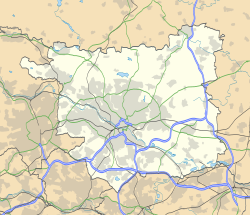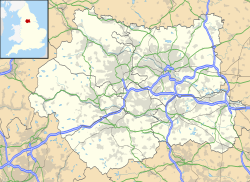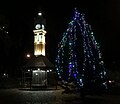| Oakwood | |
|---|---|
 The Oakwood Clock tower following restoration. 2015. | |
Location within West Yorkshire | |
| Metropolitan borough | |
| Metropolitan county | |
| Region | |
| Country | England |
| Sovereign state | United Kingdom |
| Post town | LEEDS |
| Postcode district | LS8 |
| Dialling code | 0113 |
| Police | West Yorkshire |
| Fire | West Yorkshire |
| Ambulance | Yorkshire |
| UK Parliament | |
Oakwood is a suburb of north-east Leeds, West Yorkshire, England, that lies between Gipton and Roundhay Park.
Contents
- Etymology
- History
- Roundhay Estate and Oakwood House
- Development and Growth
- Roundhay Garden Scene
- Amenities
- Oakwood Farmers' Market
- Associated areas and boundaries
- Gipton Wood
- Gallery
- Location grid
- See also
- References
- External links
The suburb lies within the LS8 postcode and sits within both the Roundhay ward of Leeds City Council and Leeds North East parliamentary constituency.









